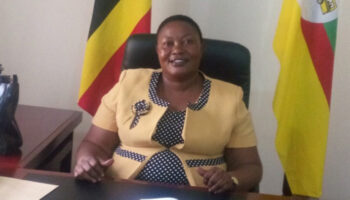Shocking! In every 10 learners in Primary 3-7 you come across in Busoga, only one can read and comprehend a sentence written in Lusoga; the News site exclusively reports!
As such, the sub-region has once again scored another miserable ‘accolade’ at national level but this time in the education sector.
Whereas Busoga sub-region according to UBOS ‘controls the headquarters’ of Poverty in Uganda, the same sub-region is ranked number one in poor performance when it comes to implementation of the government’s policy on use of local language especially in lower primary.
In a latest report by a local organization Uwezo -Uganda, Busoga learners are trailing with only 13.1% of them in Primary 3-7 capable of reading and comprehending text in local language, followed by Lango (23.4%), Ankole/Kigezi (40.3%) and Buganda leading with 50.6%.



DETAILS
This organization conducted a survey last year whose results we have chanced on. It is entitled ‘ARE OUR CHILDREN LEARNING?’
29 districts across the regions in Uganda were surveyed with Local Language competence assessed in 12 districts. The languages included Luganda, Lusoga, Runyankore/Rukiga and Leb-Lango. The 12 districts surveyed in the local language competencies included three in Buganda (Mpigi, Mukono and Kassanda), Busoga (Bugiri, Kamuli and Namutumba), Lango (Alebtong and Oyam) and Kigezi district of Kabale among others.

The kids interviewed were in the age bracket of 4-16years and that each district was taken through 15 enumeration areas. The research covered learning assessment in English, (4) local languages and numeracy tests pegged on Grade 2 curriculum.
THE RESULTS

It was indicated that in every 100 P.3 kids in Busoga, it’s most likely that none of them (0.7%) can read and comprehend a sentence in Lusoga while in Lango, only 4.6% can do this and in Ankole/Kigezi (14.8%) and Buganda 19.5%. Combining the results from primary 3,4,5,6 and 7, Busoga kids capable of reading and understanding a sentence written in their mother tongue are only 13.1%, followed by Lango with 23.4%, Ankole/Kigezi 40.3% and Buganda leading with 50.6%.
“Only one learner in every 10 can read and comprehend a text in Lusoga. There are no significant differences in reading levels between boys and girls. Only 1% of the learners in Primary 3 can comprehend a text in Lusoga” it says.

The kids in the districts under survey in Busoga were assessed on reading, letter writing, words, paragraph and read and interpret.
In Bugiri, we can confirm that 71% learners cannot read, Kamuli 90% and Namutumba district 84% can’t read Lusoga. When it comes to word identification or spelling, only 11% can do it in Bugiri, 2% in Kamuli and Namutumba only 5%.
“Over 80 percent learners in Primary 3 are none readers in Lusoga. Kamuli has the highest proportion of none readers in primary 3 (90%), while Bugiri has the relatively lowest proportion of Lusoga none readers in primary 3. Less than a half of P.7 (44%) can comprehend a text in Lusoga” it says.
It says that Bugiri has the highest proportion of learners who can read a text in Kyabazinga’s language in P.7 while Kamuli has the highest proportion of none readers of Lusoga at 32% and lowest proportion of primary 7 learners who can comprehend a text in Lusoga.
Coming to English, the report shows that only 24% of boys in primary 3 to seven can read and comprehend a text in English. It says there are slightly more girls than boys who can read and comprehend a primary two text in English.
“The proportion of learners in Primary 3 to seven who can read a text in English is more than twice the proportion of those who can read a text in Lusoga” it says.
The report concludes that use of a mixture of languages in schools seems to be better than the use of a local language. It therefore suggests that the language policy needs a careful attention and it must address important issues of equity.
Watch out for further investigation reports on Busoga’s education!








